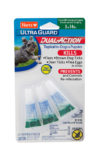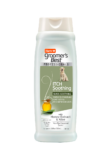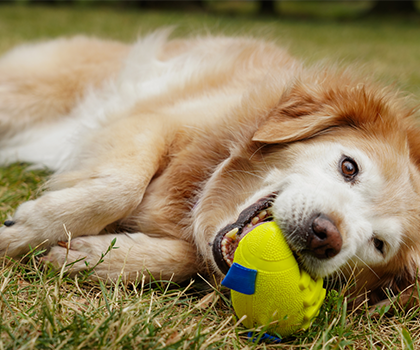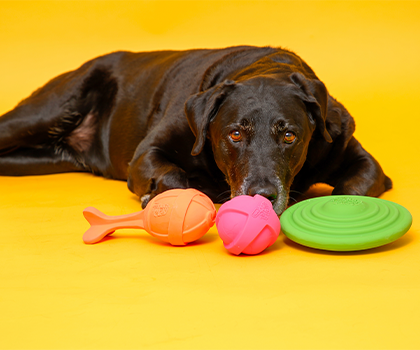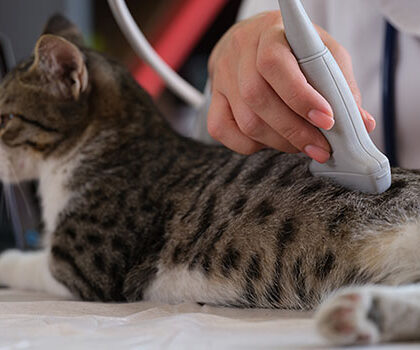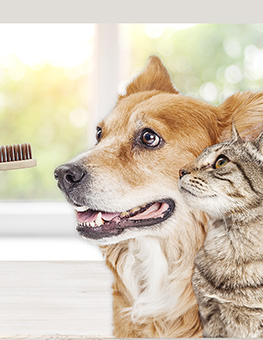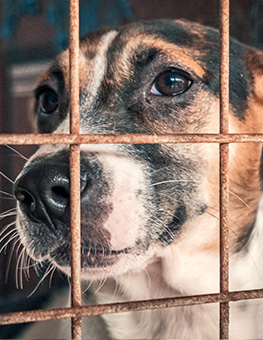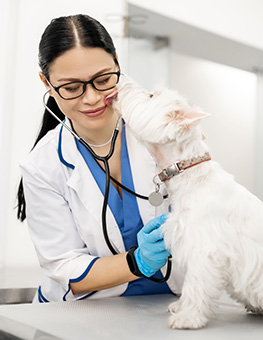Flea Allergy Dermatitis: What is It and How to Care for your Dog's Skin
A flea infestation on your dog can result in a very common skin condition called Flea Allergy Dermatitis (FAD), which can also be called flea bite hypersensitivity, or flea bite allergy.

Allergic dogs are more likely to develop FAD, and experience more severe symptoms.
FAD is an itchy, inflammatory skin condition that is caused by fleas feeding on your dog. It is most often seen in young adult dogs between the ages of 2-5 years, although it can occur at any age. Not all dogs will develop FAD from contact with fleas, however, for those that do, the number and severity of symptoms will vary.
Fleas prefer warm and humid environments, and flea populations generally peak during the summer and fall months. However, in states where the climate is consistently warm and humid year-round, flea infestations can be a constant threat. As flea populations fluctuate, so does the incidence of FAD.
Fortunately for susceptible dogs and their owners, FAD is easily diagnosed, responds quickly and well to treatment, and is completely preventable.
How FAD Develops
To survive and reproduce, adult fleas must feed on the dog. To do this, they bite into the dog’s skin and feed on the dog’s blood. With each bite, the flea injects a small amount of saliva into the skin. The saliva contains specific proteins (allergens) which can trigger an allergic reaction in dogs that are sensitive to these proteins. This allergic reaction is very similar to what happens in people after a mosquito bite. The mosquito’s saliva causes a local reaction in the skin which results in an itchy, red bump. Some people are more reactive than others, and may experience greater itching and inflammation at the site of the mosquito bite.
As with people and mosquito bites, some dogs are more sensitive to flea bites, especially if they are prone to allergies, or have been diagnosed with atopic dermatitis. Allergic dogs are more likely to develop FAD, and experience more severe symptoms than nonallergic dogs. Even one flea bite can trigger severe itching in a very reactive dog. Symptoms associated with this allergic reaction may appear immediately within a few minutes, or be delayed and show up 1-2 days later.
Diagnosing FAD
Flea Allergy Dermatitis is usually diagnosed by the combination of the presence of adult fleas or flea droppings (also called “flea dirt” or frass) found within the dog’s fur and/or environment, and clinical signs involving the skin.
Presence of Fleas and Flea Dirt
- The first step in diagnosing FAD is to check for the presence of adult fleas on the skin or within the fur coat of the dog. Fleas can be tricky to find, especially if there aren’t that many of them to start with, or they blend in and are difficult to see against the background of a dark coat. Finding fleas on your dog is not a requirement in order for your veterinarian to diagnose FAD.
-

Fleas can be tricky to find, but not a requirement for your veterinarian to diagnose FAD.
The second step is to check for evidence of fleas by looking for flea dirt in the dog’s coat, on bedding, carpets, and upholstered furniture, or anywhere the dog has spent time. Flea dirt consists of specks of dried blood that the flea has eliminated and when placed on a wet paper towel will change in color from black to dark red as the blood rehydrates. A fine-toothed flea comb is the best tool for examining and parting the fur to look for fleas and flea dirt on your dog.
Dermatological Signs
Clinical signs associated with Flea Allergy Dermatitis can vary between dogs and may range from occasional scratching in the nonallergic dog to extreme itching and discomfort in the allergic dog. FAD is usually seen in specific areas on the dog where fleas are likely to infest and feed. These areas include a large triangular region covering the lower back and abdomen, tail base, and upper thighs, as well as around the neck and ears.
The classic signs of FAD include:
- Tiny red raised dots on the skin indicating flea bites
- Itchiness and scratching
- Licking, biting and chewing at the skin in the affected area (self-trauma)
- Restless behavior and general discomfort (for example, suddenly jumping up from a resting position)
- Hair thinning and loss
- Irritated, red, inflamed skin
If left untreated FAD will progress and become a chronic condition; skin in the affected area may have total hair loss, develop crusty bumps or scales and become thickened and dark in color. These areas of compromised skin are also prone to secondary bacterial and fungal infections.
Managing and Treating FAD
The management of FAD consists of three steps: immediate eradication of the flea infestation on the dog and in the dog’s surroundings (including other pets in the household), supportive medical treatment to ease symptoms and to help the inflamed skin heal, and prevention of future flea infestations.

Your vet can advise you on flea control products and the best course of action.
The most important part of the treatment program for FAD is to completely eliminate the flea infestation from your dog and from your dog’s environment. As long as there are feeding adult fleas, the allergy cycle will continue, and the dermatitis will worsen. An effective flea eradication program should target both the active adult fleas, as well as the immature stages of developing fleas (eggs, larval and pupal stages). There are many safe and effective flea control products on the market, and your veterinarian can advise you on the best products and course of action for your particular situation.
Most dogs will require supportive medical treatment for their clinical symptoms associated with FAD. Very itchy dogs often get immediate relief from a short course of corticosteroids (steroids), such as prednisone or prednisolone. Steroids are also potent anti-inflammatory drugs that may be given along with antihistamines and omega-fatty acids to promote skin healing and health. Your veterinarian will prescribe systemic antibiotics and/or anti-fungal agents if a secondary skin infection is present.
In addition to seeking professional medical treatment, there are steps you can take at home to manage your dog’s symptoms of FAD, and provide a healthy living environment to keep your dog feeling comfortable and supported.
Steps to Manage Your Dog's Symptoms:
- Maintaining a clean home environment to remove flea eggs and the larval and pupal stages of developing fleas. This includes frequent vacuuming of floor surfaces and upholstery, and replacement or laundering of bedding or fabrics that have been in contact with your dog. The immature flea stages make up the majority of the flea life cycle, and if not removed from your dog’s home environment, will become adult fleas that infest and feed on your dog.
- Bathing your dog to remove dead fleas and flea dirt and provide relief from the itching. Choose a gentle over-the-counter shampoo formulated for dogs with itchy skin.
- Starting a flea prevention program suitable for your dog’s living conditions and geographical location with the advice of your veterinarian. As Benjamin Franklin famously said: “An ounce of prevention is worth a pound of cure”.



